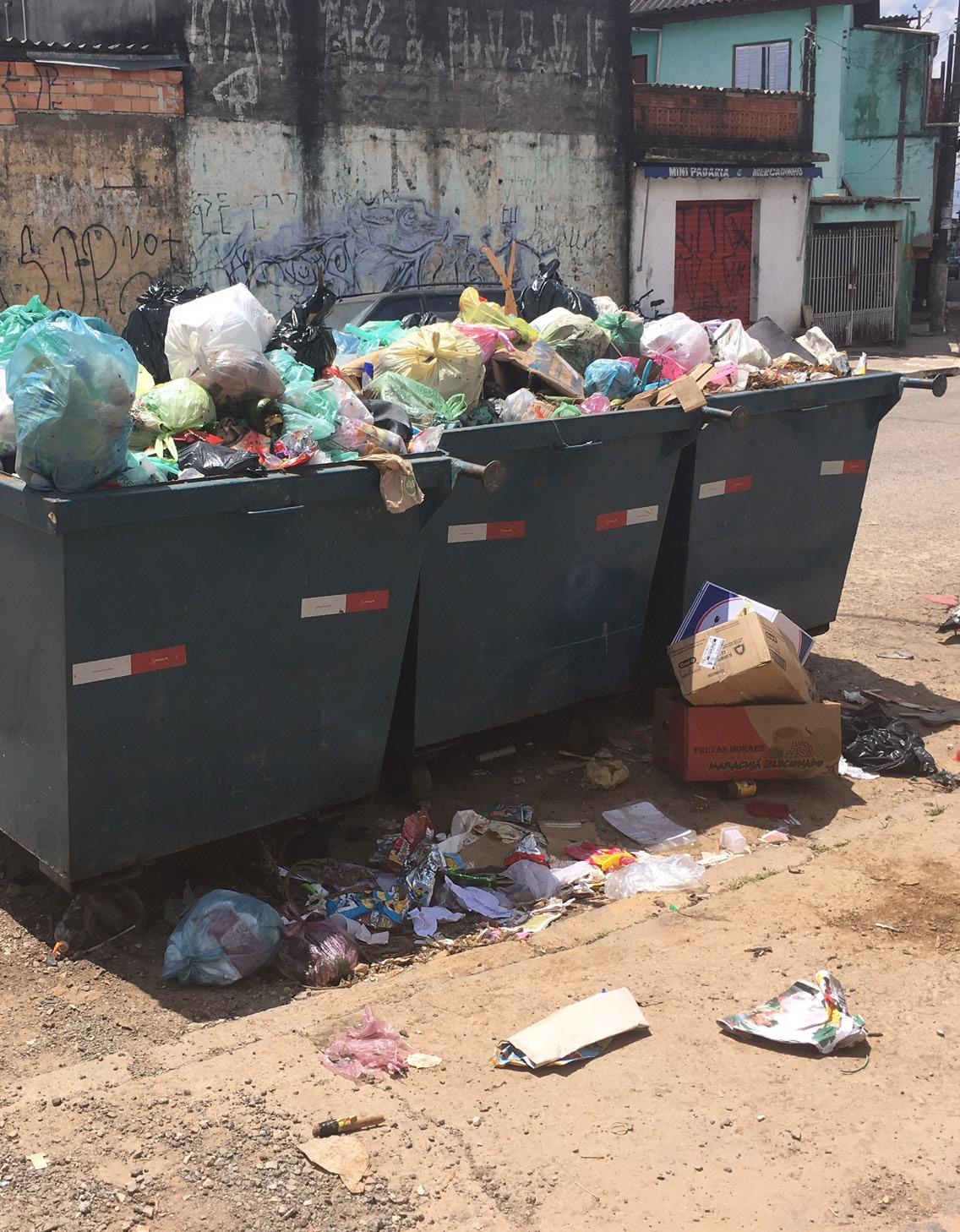
4 minute read
Problem Identification And Relevance
There are two interconnected reasons waste management is a relevant and pressing issue in Ocupação Anchieta. The first relates to the Occupation’s zoning designation and relation with the landowner, Instituto Anchieta Grajaú (the Institute) (IAG). The second justification stems from deficiencies in current waste management practices that threaten the environment and, consequently, the Occupation’s health, wellbeing, and tenure security.
136 (previous image) Residents Carry Trash to Dump Site. 137 (left) Dumping Site at the Entrance of Ocupação Anchieta.
The site is located in a Special Zone of Social Interest (ZEIS), specifically ZEIS 4. This zoning designation has environmental protections that allows for social housing projects (Ribeiro et al., 2015). Environmental protection more specifically refers to protected water supply areas (The Cities Alliance, 2009). Therefore, the land on which Ocupação Anchieta sits can be used to house people, but must also maintain a certain level of environmental quality. If environmental quality is not maintained, residents could face eviction. Considering IAG has attempted to evict the Occupation residents multiple times, it is crucial for residents to have a waste management plan. In an effort to increase tenure security, the proposed waste management plan will improve environmental conditions in Ocupação Anchieta.
In addition to this broader relevance, the findings and general observations that resulted from the site visit demonstrate a localized and immediate need for a better waste management system. The Taubman Team noticed that the communal dumpsters, located on the periphery of the Occupation, were consistently full each day on site. These dumpsters are located outside and surrounding the Occupation. Municipal trash collection trucks do not enter the site because of the Occupation’s poor street conditions. Nonetheless, overflowing dumpsters could be an indication that the current number may not be providing a sufficient level of service.
According to the doorto-door household survey, a high percentage of survey respondents (98%) reported disposing of their solid waste in a communal dumpster that is regularly collected. Although the survey also showed that 0% of respondents burn, bury, or throw their waste into the streets, the Taubman College Team observed all three of these waste disposal methods on-site. Ninety-five percent of
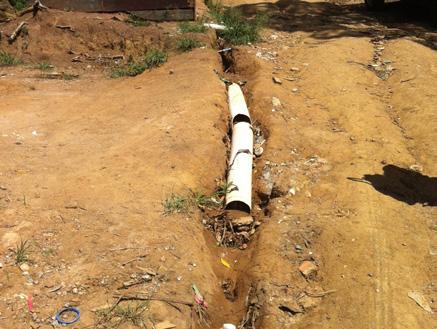
138 Garbage in Rudimentary Wastewater System.
139 Burned Garbage. observation checklists indicated that garbage was in the streets throughout the Occupation. Forty percent of checklists recorded garbage sightings in the sewerage system and eighteen percent of checklists identified garbage in water. The Taubman Team also documented small landfills scattered throughout the Occupation.
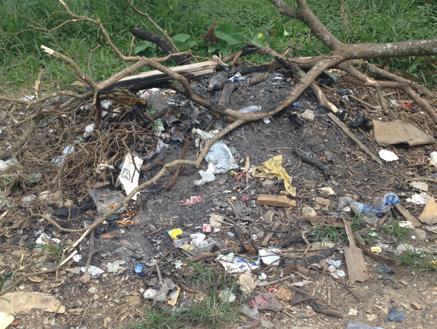
There are a number of reasons why trash may not be making it to the collective dumpsters. First, dumpsters are not evenly accessible to Occupation residents. Some residents have to walk up to one kilometer to access a dumpster. Second, during the clientpartner interview, the Taubman Team learned that children are often responsible for taking out their household’s trash. Children doing this will sometimes become distracted along the way, leaving trash scattered on the ground. A third possibility may be due to the lack of trash and recycling receptacles located in public spaces, such as near recreation hubs, bars, and major pathways. By designating proper places for public waste disposal, receptacles may discourage dumping throughout the Occupation. Also, having color coded receptacles using the standard colors for different types of waste in Brazil, may also inform users of what and how to recycle. This will help to promote new behavior towards waste management in the Occupation.
The Taubman College Team conducted water testing at four different locations in the Occupation: (1) midway through the creek at a crossing area where a small urban garden is located, (2) as far deep into the creek we could access, (3) a gully where water was stagnant near the edge of the Occupation, and (4) right before the creek water flows into a pipe and out of the Occupation. Water test results found potentially harmful bacteria. Only the site tested
with stagnant water emitted an odor. Although the test did not identify any lead or pesticides above the U.S. Environmental Protection Agency (EPA) levels, there is a possibility that these elements may be present in lesser amounts, undetectable by the testing kit used. Although more scientifically reliable water testing would need to be conducted before making any viable claims, the abnormal mineral levels in the water support the general claim that the Occupation’s creek and springs are affected by the site’s pollution to some extent.
On March 5th, 2017 Taubman College Team and the Association organized a meeting to explain the student project and get residents’ input. At the community meeting, residents voiced a desire to live in a clean and healthy environment. One resident had the idea to install signage to encourage residents to keep the Occupation clean. Another resident talked about the importance of recycling and the benefits of having a recycling program. Prior to the community meeting, a group of students from the Taubman College Team met one woman. who alongside other women in the Occupation, collects recyclables for the entire site as a livelihood. She goes door-to-door asking residents for their recyclable materials and sells the materials she collects to somebody outside of Ocupação Anchieta. Once recyclables leave the Occupation, they eventually go to a factory where they are chopped into smaller pieces and made into a powder that can then be used, according to the resident.
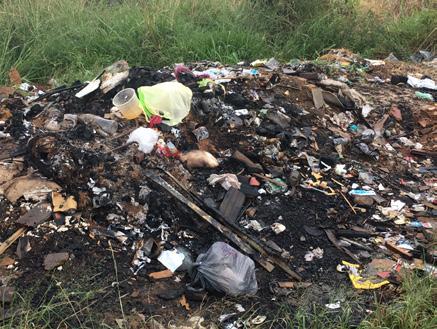
140 Landfill and Burnind Site.
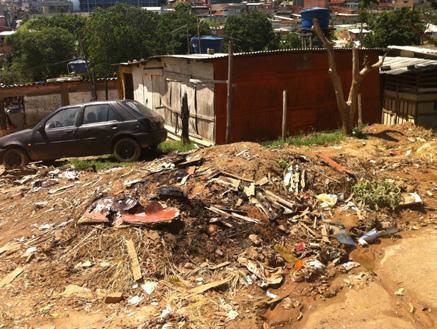
141 Dumping Site.






